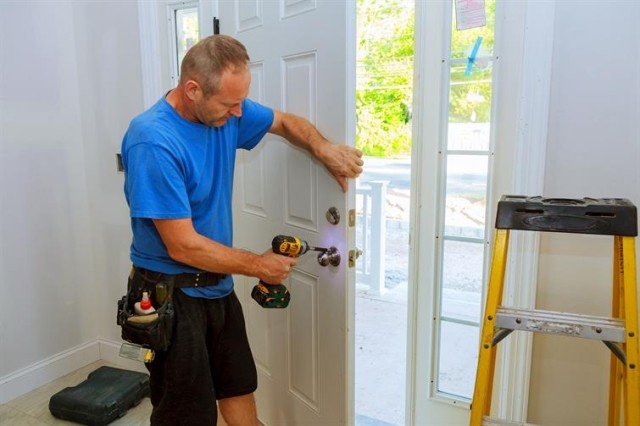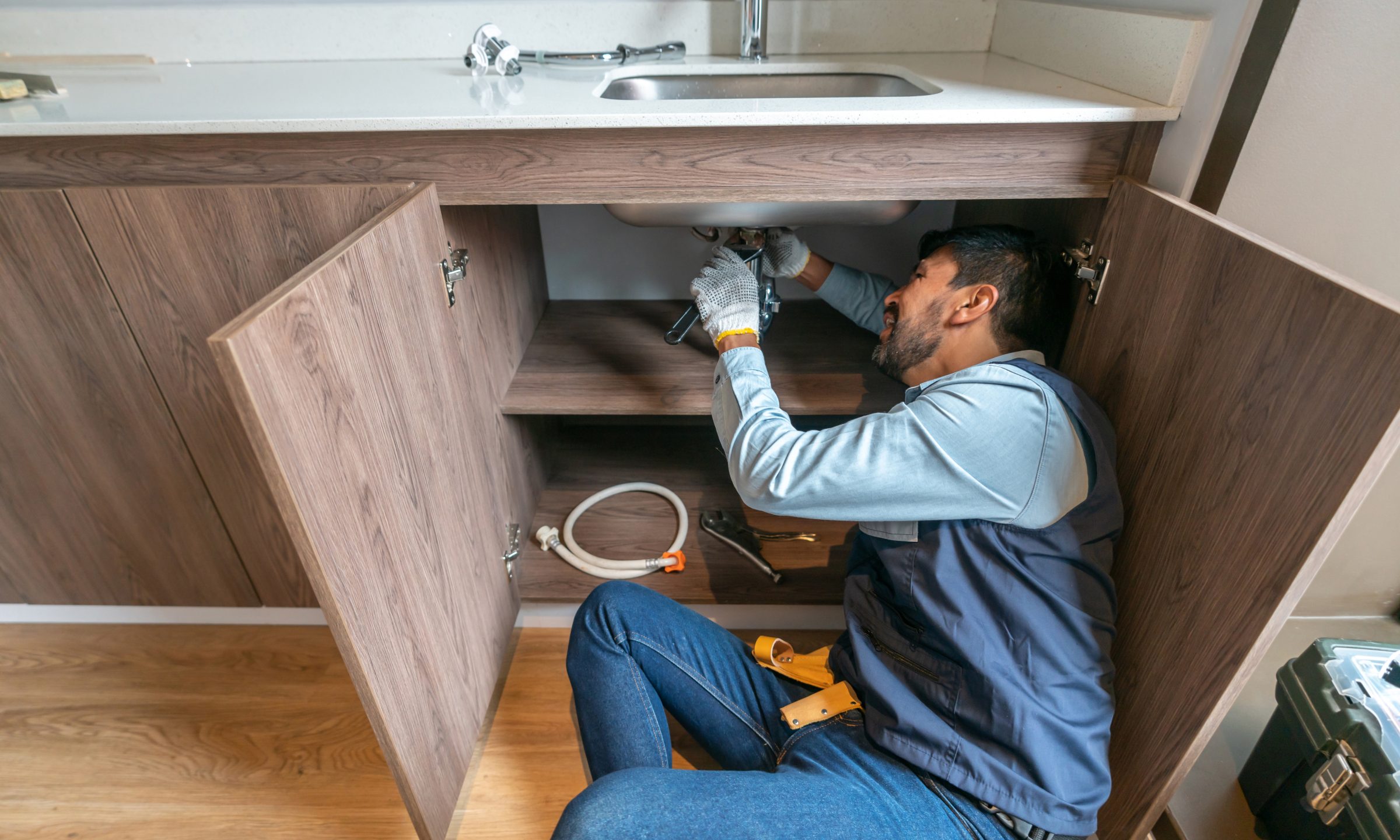Steps to Efficiently Handle Plumbing in Rental Properties
Steps to Efficiently Handle Plumbing in Rental Properties
Blog Article
The author is making several great pointers on the subject of Plumbing Maintenance and Repair in your Rental Property in general in this content on the next paragraphs.

Managing plumbing concerns in rental buildings efficiently is vital for maintaining renter contentment and preserving the residential property's value. Whether you're a property owner or a building manager, understanding just how to resolve these common issues can conserve you money and time while ensuring compliance with lawful duties. Right here's a detailed overview on just how to handle plumbing problems in rental residential properties.
Record Everything
Keep comprehensive records of all reported pipes problems and the activities required to settle them. Documents should include dates, descriptions of the problem, communication with occupants, and invoices from specialists or plumbing professionals. This information can be crucial for insurance claims, tax deductions, and legal protection.
Use Qualified Professionals
Constantly make use of licensed and insured professionals for significant pipes repairs and installments. This guarantees that the job is up to code and can assist stay clear of liability problems in case of crashes or more damages. It additionally guarantees occupants that repair services are being managed skillfully.
Develop Clear Communication
Encourage tenants to report any pipes concerns as quickly as they take place. Give several communication channels such as phone, e-mail, or an occupant site to make it simple for them to reach out. Prompt actions to these records can stop minor issues from escalating right into significant troubles.
Inform Renters
Educate your tenants concerning what comprises a pipes emergency and what does not. Give standards on just how to take care of minor issues themselves, such as making use of a bettor to unclog a bathroom. Additionally, notify them regarding what they ought to avoid putting down drains pipes to prevent blockages, such as oil, coffee grounds, and non-biodegradable items.
Normal Maintenance
Execute a regular maintenance timetable for all pipes systems in your leasing buildings. Routine checks can aid determine and fix concerns like leakages, slow-moving drains, or rusty pipes before they become severe. Consider employing a professional plumbing professional to examine the residential properties yearly or semi-annually.
Quick Feedback to Emergencies
Have a strategy in position for responding to plumbing emergency situations. This should consist of having the call info of trusted plumbing services that supply 24/7 emergency situation repairs. Quick action is necessary to decrease damage in circumstances like ruptured pipes or serious leakages.
Preventive Upgrades
Consider updating older plumbing systems and fixtures to a lot more contemporary, effective models. This can decrease the regularity and extent of pipes issues and lower long-lasting upkeep costs. It's also a selling factor for possible tenants who value upgrades and contemporary attributes.
Lessee Move-Out Inspections
Conduct comprehensive plumbing checks throughout move-out examinations to guarantee that any type of concerns are recognized and attended to prior to a brand-new lessee moves in. This prevents conflicts with new renters over pre-existing problems and makes sure the property is in top condition.
Understand Legal Responsibilities
Be aware of your lawful duties pertaining to pipes and basic building upkeep. The majority of territories need property managers to guarantee their properties are habitable which all pipes systems remain in good working order. Failure to deal with major issues promptly can lead to legal actions from lessees.
Lessee Repayments
If a plumbing issue calls for prompt focus and the occupant fixes the issue on their own, have a clear plan in position for repaying costs. Ensure lessees recognize they must acquire prior approval for higher-cost fixings unless it's an outright emergency.
Conclusion
Taking care of pipes issues in rental buildings needs a proactive approach and excellent communication with tenants. By remaining on top of maintenance, responding without delay to emergency situations, and using professional experts, landlords can maintain their homes in excellent problem and maintain excellent connections with lessees.
How to Handle Water Damage in a Rental Property
What is Water Damage?
Water damage is harm or destruction caused by water entering areas where it is not supposed to be. It can be caused by a variety of sources and can manifest in different ways. The most common examples of water damage include:
Leaking roof Plumbing leaks Appliance malfunctions Poor drainage Flooding Sewage backup Condensation Tenant negligence HVAC system issues Frozen pipes Is water damage dangerous?
Water damage itself is not inherently dangerous, but it can lead to various hazards and health risks if not promptly and properly addressed. The severity of these risks depends on the extent of the water damage, the source of the water, and how quickly it is mitigated.
Some potential dangers associated with water damage include structural damage, mold and bacterial growth, electrical hazards, water contamination, and pest infestations. In situations where mold and mildew have gone unaddressed, mold can start to develop within 24-48 hours of water exposure, and this can impose a serious health risk to tenants. In particular, mold spores and damp conditions can lead to respiratory issues and even make existing health problems worse, such as allergies, asthma, or immune disorders.
Water Damage in an Apartment - Who is Responsible?
If the water damage is caused by the tenant’s negligence, the tenant is responsible for the cost of repairs. If the water damage is caused by a defect in the property, the landlord is responsible for the cost of repairs. If the water damage is a result of natural causes, such as excessive rain, then the landlord is responsible, since the water intrusion likely occurred due to a defect in the property. Landlord Responsibility water damage in rental property
Since maintaining habitability is the landlord’s legal responsibility, landlords are responsible for any resulting structural damage caused by water damage. These structural damages may include damage to walls, roofs, ceilings, and flooring. If water damage has affected the rental property’s original structure, the landlord is responsible for repairing or replacing those materials. Therefore, landlords should have property insurance that covers the structural components of their rental property so that they can receive help with the costs of covered events.
Preventative measures can also help landlords avoid massive renovations. Preventative maintenance may include conducting regular inspections to identify and address potential water damage before it becomes a major and urgent problem.
If a landlord fails to meet their responsibilities regarding water damage, it can lead to legal disputes and potential liability. Tenants who believe their landlord is not addressing water damage issues in accordance with California law can seek legal advice or contact local housing authorities for assistance.
https://www.goodlifemgmt.com/blog/water-damage-in-a-rental-property/

We hope you enjoyed our post on 10 Common Rental Property Repairs. Thanks a lot for taking time to read our post. Sharing is nice. Helping others is fun. Bless you for being here. Please check our website back soon.
Report this page